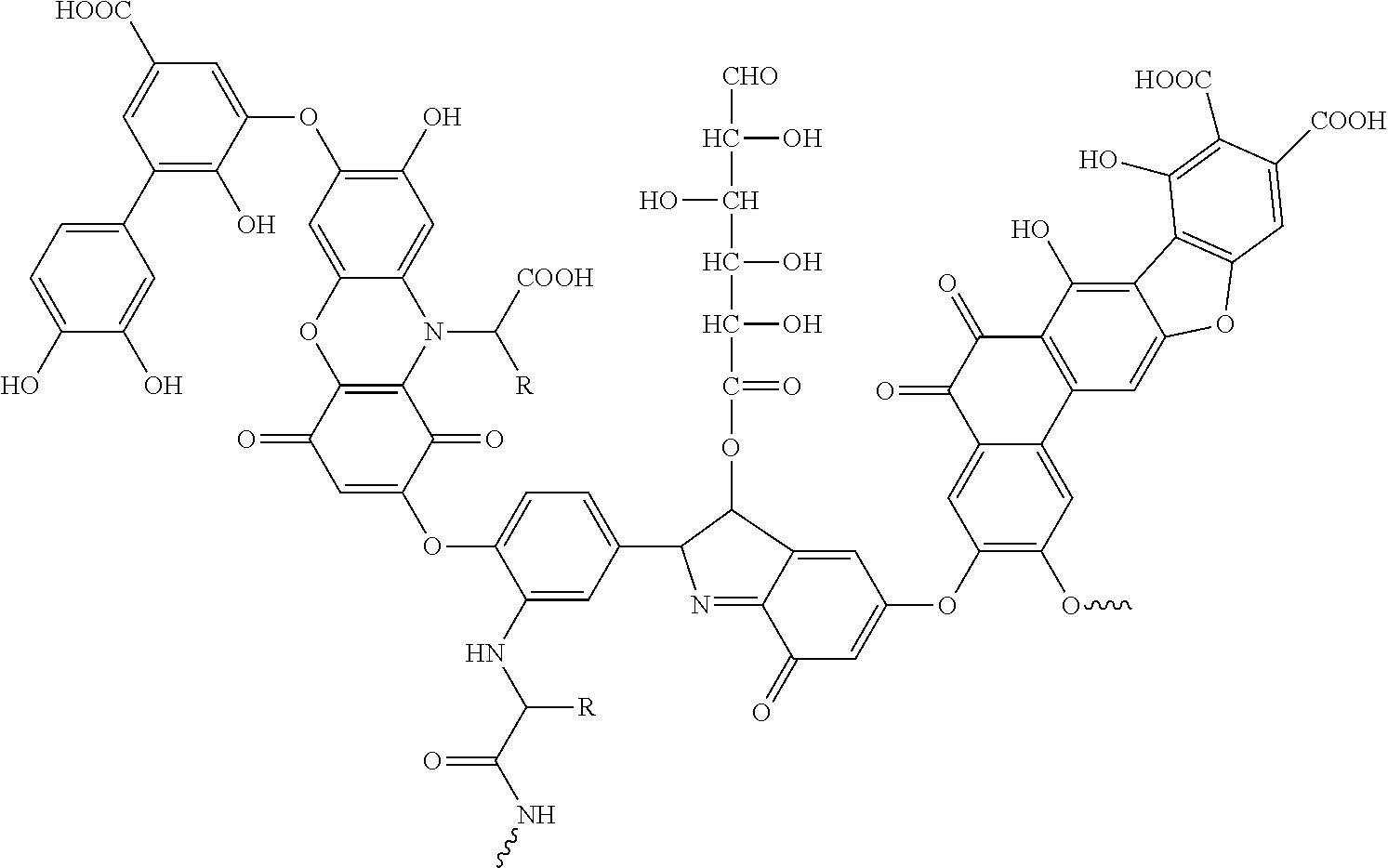Humic Acid Composition
a technology of humic acid and composition, applied in the field of agriculture, can solve the problems of inability to use humic acid or co-formulated with many commercial fertilizers, pesticides, adjuvants, etc., and achieve the effects of improving the quality of humic acid, and improving the effect of humic acid
- Summary
- Abstract
- Description
- Claims
- Application Information
AI Technical Summary
Benefits of technology
Problems solved by technology
Method used
Image
Examples
example 1
[0049]This example illustrates the experimental determination of the Hansen solubility parameters for humic acid.
[0050]Humic acid samples were dissolved in a large number of solvents having known Hansen solubility parameters. The humic acid solute in this example consisted of fully protonated humic acid and humic acid that were partially protonated, all proton functional groups of the humic acid with a pKa of 6.5 or greater were fully protonated. Five grams of humic acid were added to 100 ml of a solvent at room temperature for 48 hours. After 48 hours the solvents were scored 1 if the humic acid dissolved in the solvent and 0 if no humic acid was dissolved. The Hansen solubility parameter values of the solvents were then plotted three dimensionally with respect to δd, δp and δh to determine the solubility sphere. The Hansen solubility parameters (δd, δp and δh) for the humic acid are the coordinates for the center of solubility sphere. The R0 (interaction radius) of the solute is t...
example 2
[0051]This example illustrates the effect of relative energy density (RED) on the solubility of humic acid in compositions containing polyethylene glycol and citric acid.
[0052]Seven compositions of humic acid (in the form of 65 to 70 weight percent ore) were prepared using varying amounts of water, PEG 300 (a polyethylene glycol having a molecular weight of about 300), and citric acid as shown in Table 2. The Hansen solubility parameters were calculated based on published figures for the solvents and on the values for humic acid described in Example 1. The solubility was then observed. The rate of extraction is determined by observing the darkening of the solution as the humic acid dissolves.
TABLE 2Effect of RED on SolubilityComposition #1234567PEG 3005102030405060Citric Acid2222222Humic Acid Ore3333333Water90857565554535RED = Ra / R01.271.201.060.920.780.640.51pH after 24 hrs2.42.42.42.42.52.62.6Rate of Extraction−−−++++++++++% Humic Acid extracted00.020.080.121.421.971.95
[0053]In th...
example 3
[0054]This example illustrates the effect of relative energy density (RED) on the solubility of humic acid in compositions containing lactic acid.
[0055]Seven compositions of humic acid (in the form of 65 to 70 weight percent ore) were prepared using varying amounts of water and lactic acid (in the form of 90 weight percent lactic acid in aqueous solution) as shown in Table 3. The Hansen solubility parameters were calculated based on published figures for the solvents and on the values for humic acid described in Example 1. The solubility was then observed.
TABLE 3Effect of RED on SolubilityComposition #11121314151617Lactic Acid30405060708090Humic Acid Ore3333333Water6757473727177RED = Ra / R01.091.000.910.830.760.690.63pH after 24 hrs2.32.42.42.32.32.32.3Rate of Extraction−−++++++++++++% Humic Acid 0.10.140.91.421.891.971.98extracted
[0056]It can be seen that lactic acid is an excellent nonaqueous solvent because it both lowers the pH and the RED. As the RED decreases below 0.9, the sol...
PUM
| Property | Measurement | Unit |
|---|---|---|
| dielectric constant | aaaaa | aaaaa |
| dielectric constant | aaaaa | aaaaa |
| dielectric constant | aaaaa | aaaaa |
Abstract
Description
Claims
Application Information
 Login to View More
Login to View More - R&D
- Intellectual Property
- Life Sciences
- Materials
- Tech Scout
- Unparalleled Data Quality
- Higher Quality Content
- 60% Fewer Hallucinations
Browse by: Latest US Patents, China's latest patents, Technical Efficacy Thesaurus, Application Domain, Technology Topic, Popular Technical Reports.
© 2025 PatSnap. All rights reserved.Legal|Privacy policy|Modern Slavery Act Transparency Statement|Sitemap|About US| Contact US: help@patsnap.com

